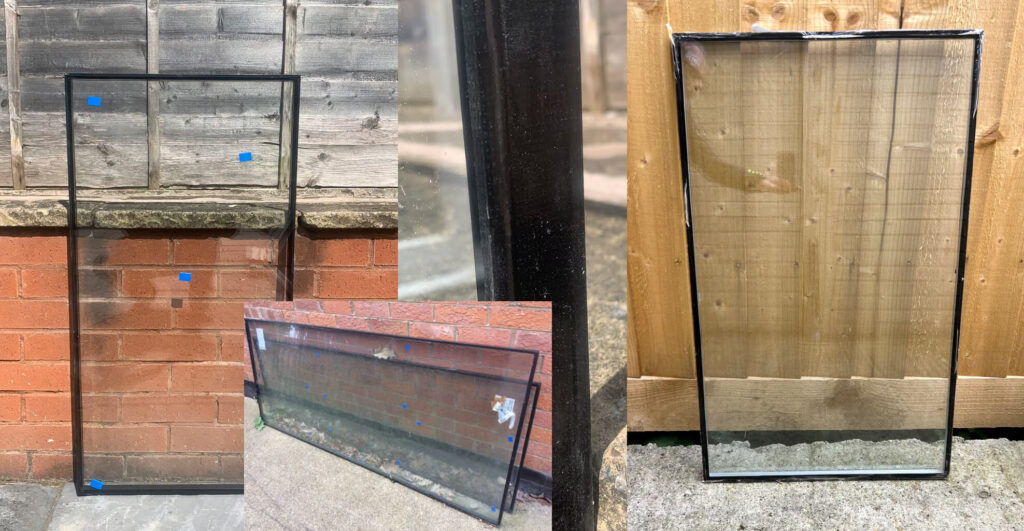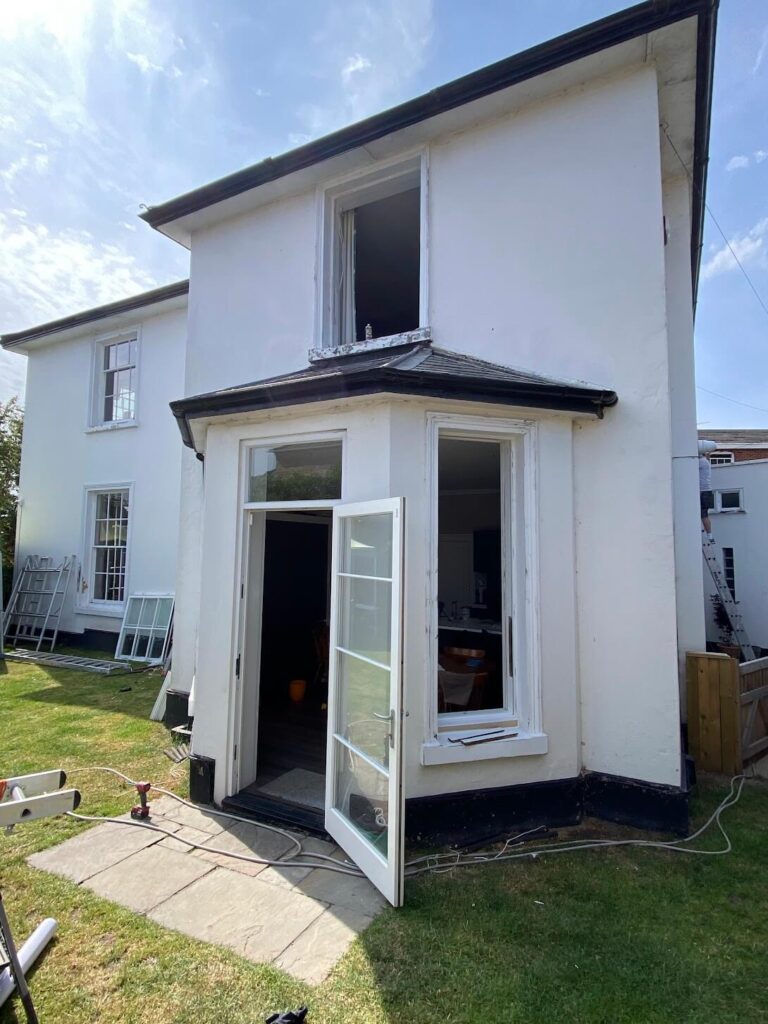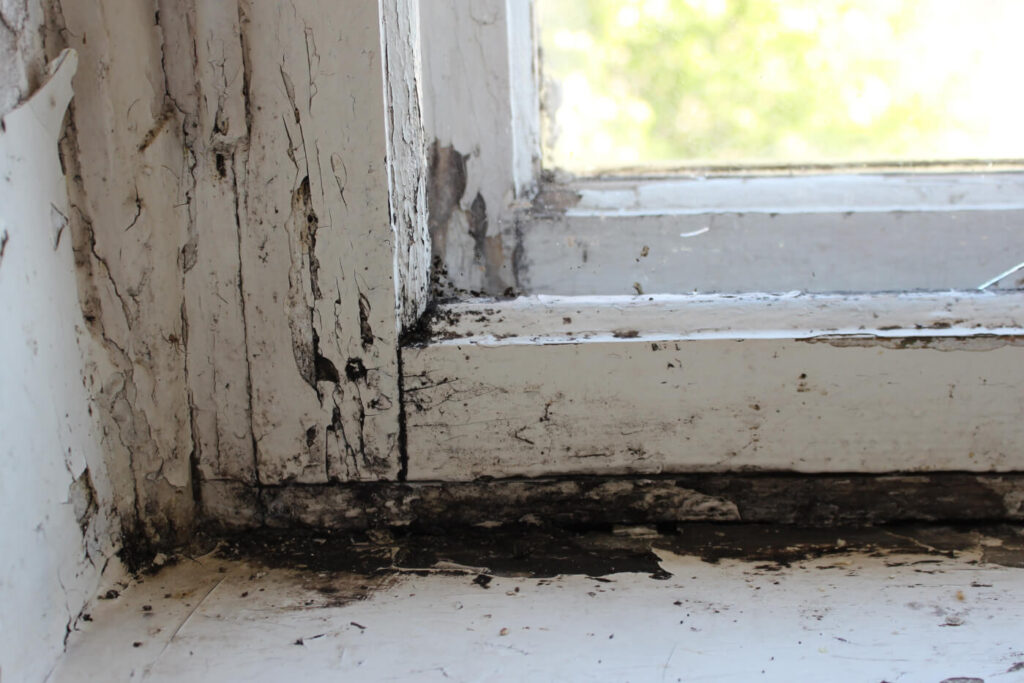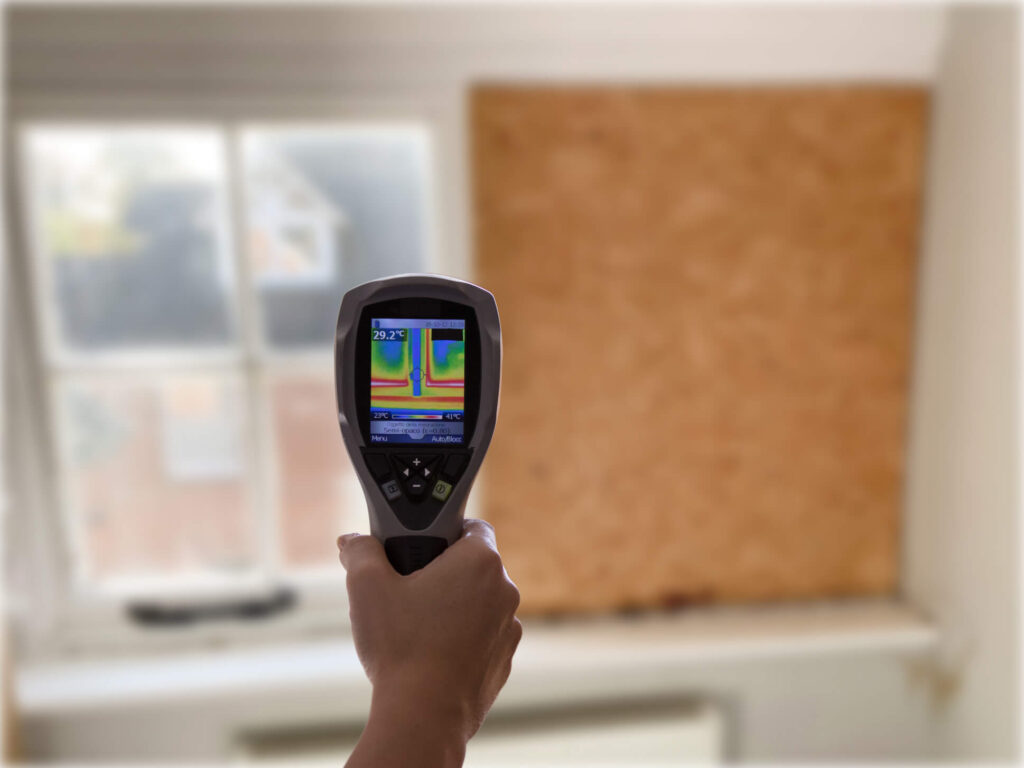
Insulating glass, also referred to as thermal glass and double glazing, is structured with two or more glass sheets separated by a gap that’s filled with air, gas, or a vacuum, acting as a barrier to minimize thermal exchange.
Insulated glazing provides improved thermal insulation and sound reduction compared to single-pane glass and can help save money on heating and cooling the property during the summer.
If you are considering insulating glass for your existing single-glazed windows, look into our double-glazing retrofitting service, where we replace single panes with highly efficient vacuum-insulated glazing units.

History of insulated glass
Insulated glass has historical roots, reaching back to the early 20th century, with a primitive form of double glazing being patented in 1903. Despite this early invention, it was not until the energy crisis in the 1970s that the utilization of insulated glass became commonplace in construction.
Improved manufacturing techniques and the addition of thermal breaks led to increased adoption of insulated glazing in both residential and commercial buildings starting in the 1980s.

Vacuum-insulated glass was first developed in the 1980s as an experimental technology offering superior thermal insulation. However, difficulties with sealing and durability limited adoption at that time. Advancements in vacuum glazing technology in the 2000s have led to renewed interest and ongoing research to make it commercially viable.
Two main producers of vacuum-insulated glass emerged in the 2010s – FINEO glass in Belgium and LandVac in China. Their products demonstrate improvements in vacuum seal reliability and longevity.
Today, standard insulating glass with gas fills is standard in cold climates to improve building energy efficiency.
While vacuum-insulated glazing remains an emerging niche product, it shows potential for very high-performance windows.
Composition of insulated glazing – double and triple glazing
Insulated glass units (IGUs) typically consist of two or three panes of glass separated by a spacer at the edges and an air or gas fill in between the panes or the vacuum created in the case of VIG insulated glass.
Double glazing uses two panes, while triple glazing uses three panes for further improved insulation.
The glass panes can be of varying thicknesses to optimize sound insulation, thermal performance, and safety.
Some examples:
| Configuration | Pane 1 | Space 1 | Pane 2 | Space 2 | Pane 3 |
|---|---|---|---|---|---|
| Standard double glazing | 3 mm | 12 mm | 3 mm | – | – |
| Acoustic double glazing | 6 mm | 12 mm | 6 mm | – | – |
| High performance double glazing | 6 mm | 16 mm, Argon filled | 6 mm low-E | – | – |
| Triple glazing | 3 mm | 12 mm | 3 mm | 12 mm | 3 mm |
| Vacuum insulated glazing | 5 mm | 0.2 mm vacuum | 5 mm | – | – |
The spacer situates itself between the glass panes, serving as a protective barrier against the infiltration of moisture and gases. Typically, the intervening gap between the glass sheets varies from 6 to 20mm in width.
Assessing the Thermal Effectiveness of Insulated Glass
The insulating capability of insulated glass is determined by its U-value. A lower U-value signifies superior energy efficiency and diminished heat loss.
Typical U-values for various types of insulated glazing are:
- Single-glazed windows – U-value of 5.0-6.0
- Standard double-glazed windows – U-value of 2.6-2.8
- Double-glazed low-E (soft coat) – U-value of 1.6-2.0
- Double glazed, argon filled – U-value of 1.2-1.6
- Triple glazed – U-value of 0.7-1.1
- Triple glazed, krypton filled – U-value of 0.6-0.8
- Vacuum insulated glazing – U-value of 0.5-0.7
The gas fill used impacts insulation significantly – argon, krypton or xenon provide much better resistance to heat flow than just air. The addition of low-emissivity coatings on one or more panes further reduces the U-value. Vacuum glazing offers the best insulation by evacuating the cavity between panes to eliminate conduction and convection.
Optimized window frames with thermal breaks and improved edge spacers also enhance the overall U-value. The best-insulated windows use a combination of technologies to achieve very low U-values below 0.5.
Acoustic insulation and sound reduction
In addition to thermal insulation, insulated glazing provides sound reduction by damping noise transmission.
Double-glazed windows with improved acoustic laminates can achieve STC ratings of 35-39 dB, while triple glazing can reach 42-45 dB. This significantly cuts exterior noise from traffic or other sources.
Light transmittance, heat absorption and reflectance of UV
The glass coatings and gas fills used in insulated glass impact its solar heat gain, UV protection and light transmittance. Low-emissivity coatings improve insulation but also reduce visible light transmission.
Solar control and tinted glass absorb and reflects more heat while letting in less light. Laminated glass with a PVB interlayer blocks over 99% of harmful UV rays.
Cavity insulation with gas, air and vacuum
The cavity between the glass can be filled with air, argon, krypton or xenon gas. Argon is most common, providing better insulation than air for moderate cost. Krypton and xenon offer further improvements but at a higher expense.
Vacuum-insulated glass has the gas pumped out to a very low pressure, nearly eliminating convection and conduction heat transfer. However, vacuum glazing is expensive and not widely used in buildings yet.
Longevity of insulated glazing
When properly manufactured, insulated glass units are very durable. Standard double glazing lasts 5-15 years, while units with improved edge spacers and seals may last 30 years or longer. Eventual seal failure can lead to fogging between panes as air leaks in.
Vacuum-insulated glass is guaranteed to last at least 15 years with an expected service life of over 25 years, thanks to the rugged vacuum edge seal design. Proper installation within FENSA guidelines and maintenance extend the lifespan of all insulated glazing types.
Insulating glass, also known as double glazing, consists of two or more panes of glass separated by a space filled with air, gas or vacuum to reduce heat transfer.
Insulated glazing provides improved thermal insulation and sound reduction compared to single-pane glass and can help to save money on heating and cooling the property during the summer.
If you are considering insulating glass for your existing single-glazed windows, look into our double-glazing retrofitting service, where we replace single panes with highly efficient vacuum-insulated glazing units.
Read more articles

Finding the ideal curtains for sash windows
Finding the ideal curtains for sash windows
Repair vs Replace Sash Windows
Repair vs Replace Sash Windows
Black mould on windows
Black mould on windows